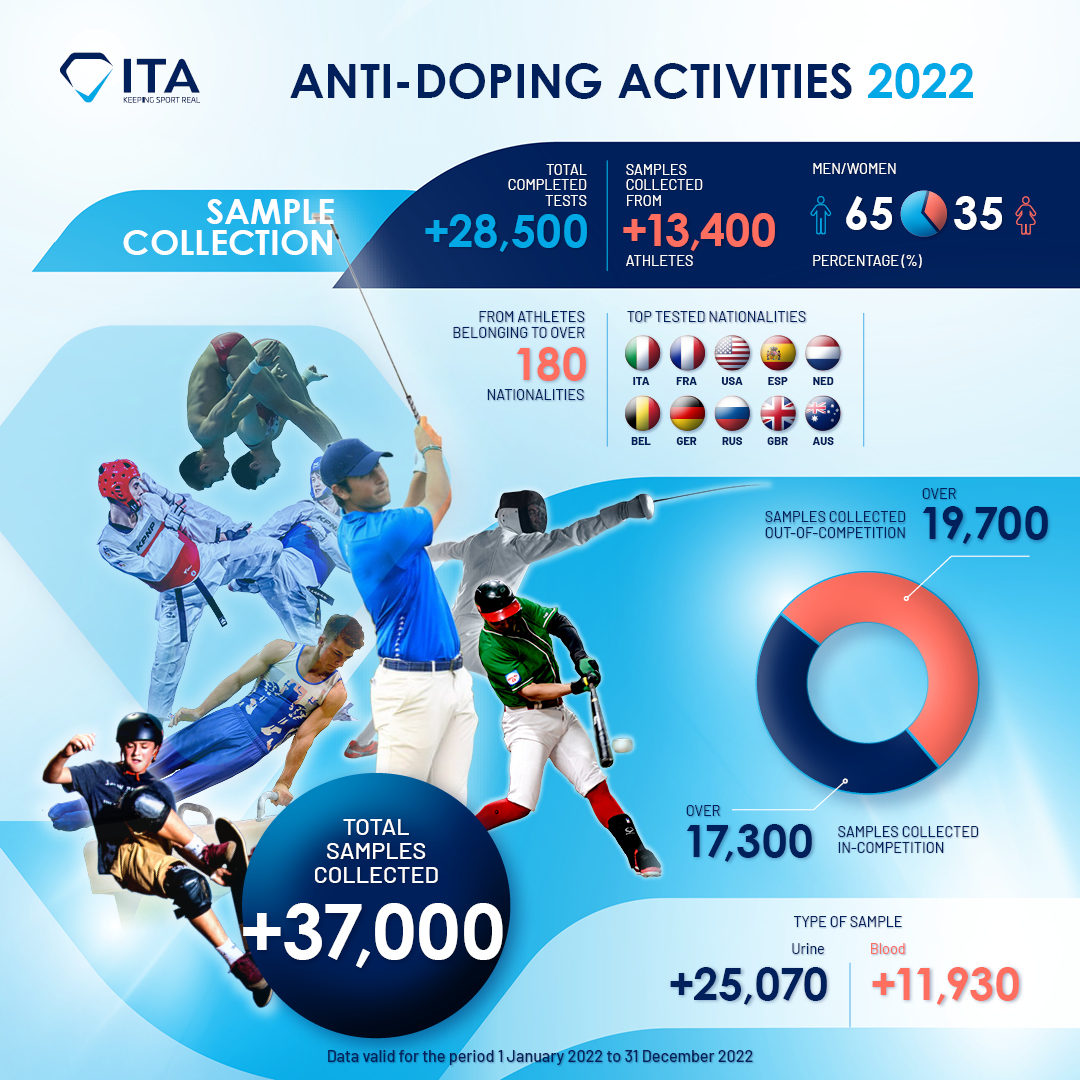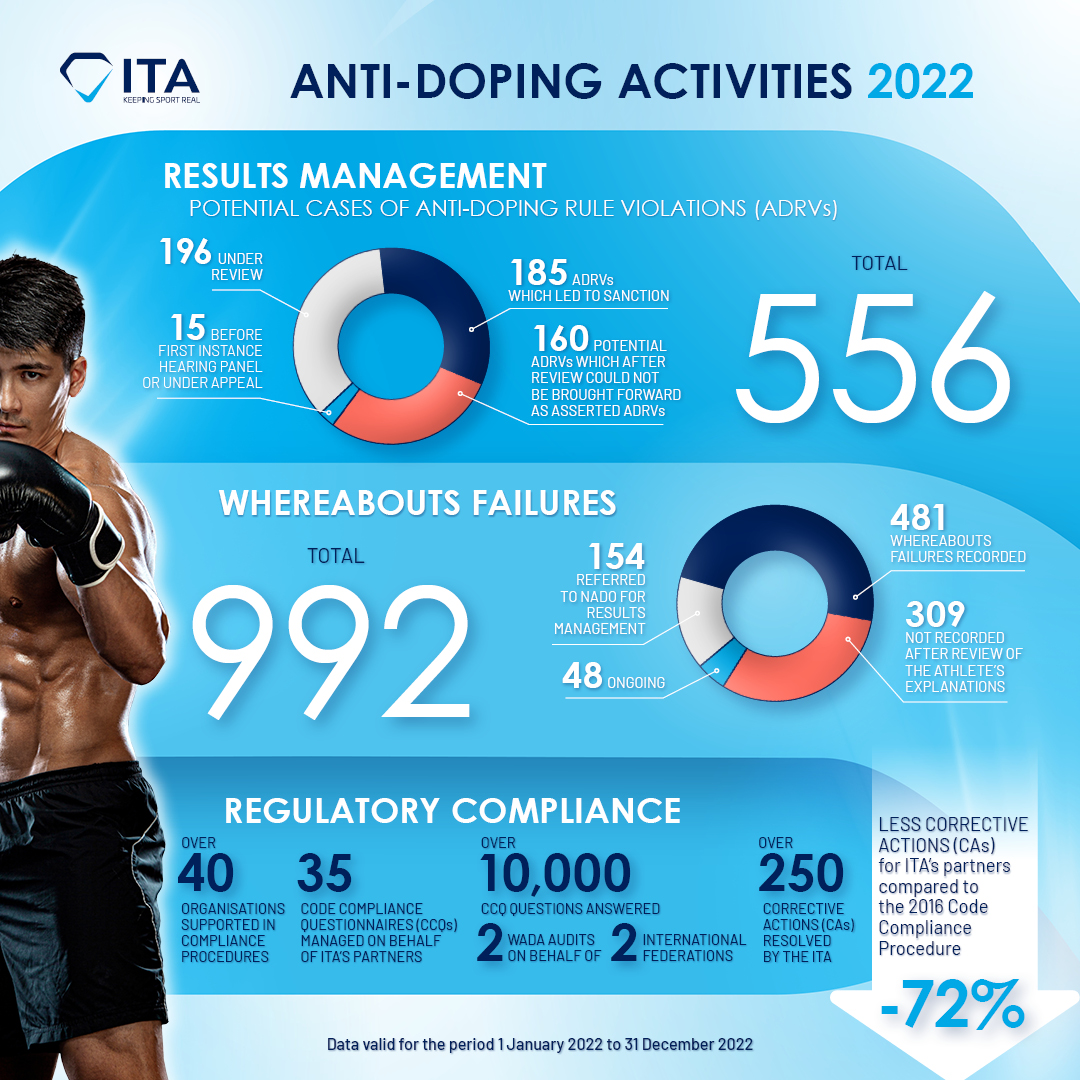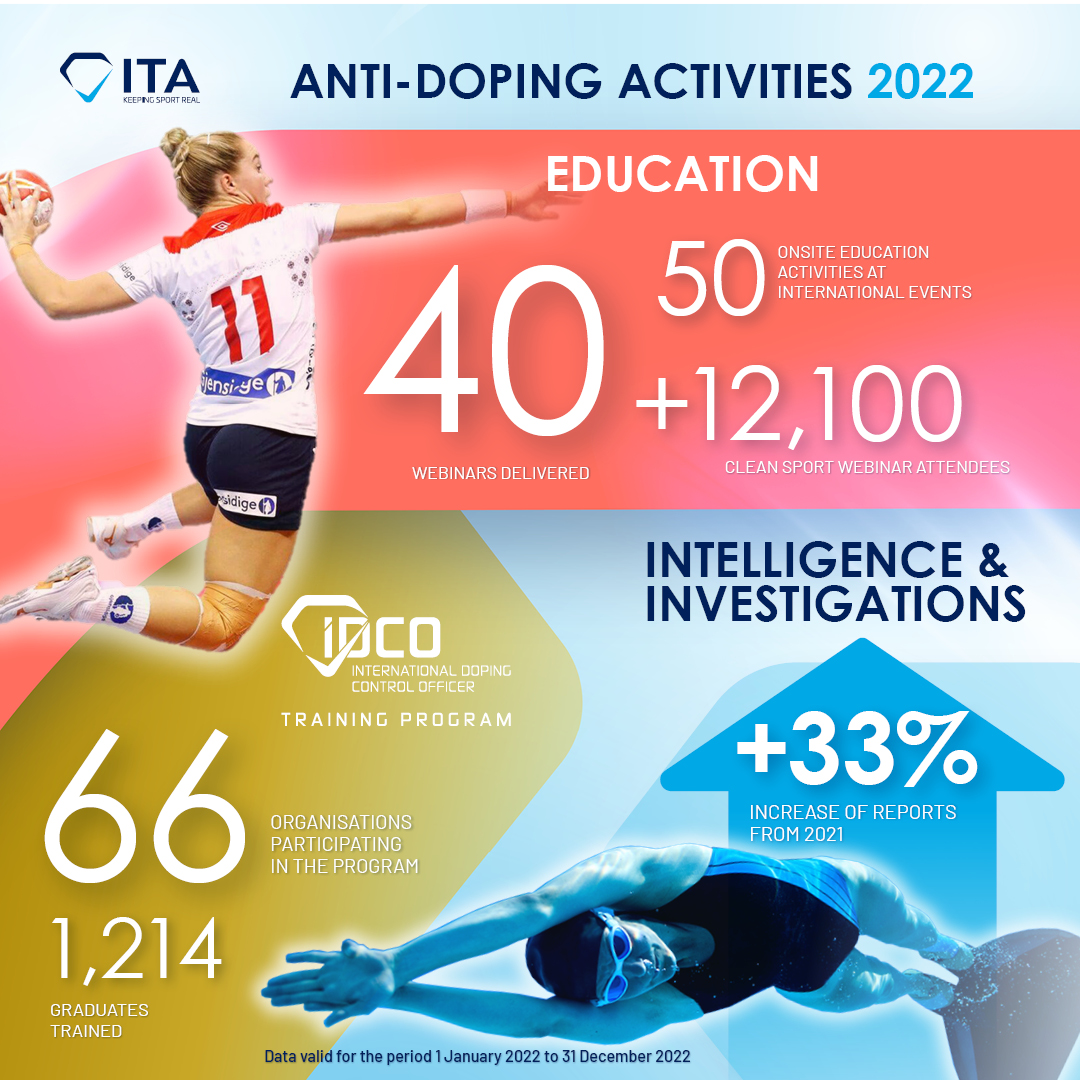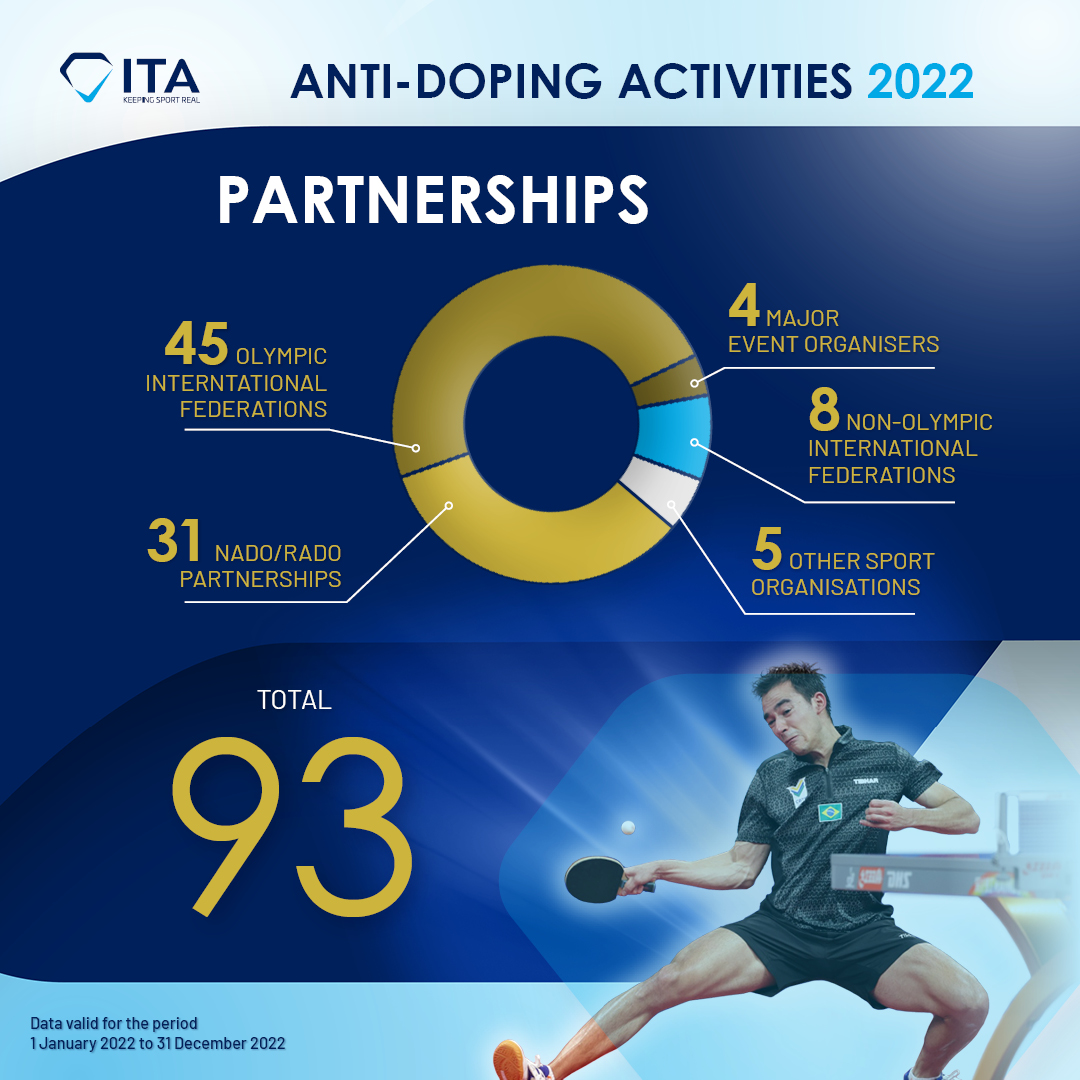Menu
 Back
Back
28 June 2023
The pursuit of integrity and the protection of athletes through independent, high-quality anti-doping programs has led more than 60 International Federations and Major Event Organisers to delegate their clean sport efforts to the ITA since its inception in 2018. This high demand for impartial anti-doping expertise has led to the rapid development of the ITA, which was established in 2018 to provide expert integrity solutions to the global sport and anti-doping community. This growth is also reflected in the ITA’s operational figures for 2022, positioning the ITA at the forefront of implementing the regulatory anti-doping framework established by the World Anti-Doping Agency (WADA).
During 2022, the ITA collected over 37,000 samples from more than 13,400 athletes from over 180 countries. 53% of these came from out-of-competition doping controls. 65% of the athletes tested by the ITA were male, 35% female.

The ITA investigated all Adverse Analytical Findings (AAFs) arising from the testing program as well as non-analytical findings in all cases where results management was delegated by the partners. Of the 556 potential Anti-Doping Rule Violations (ADRVs), 185 resulted in a sanction, while 196 others are still under review. In addition, 992 Whereabouts Failures (ie. athletes not fulfilling their obligation to provide timely or accurate whereabouts information for testing) were reviewed, 481 were recorded, 154 were referred to the respective National Anti-Doping Organisation (NADO) for results management and 48 are still pending – 309 were not recorded after review.
The ITA supported over 40 organisations with their respective WADA compliance assessment procedures and managed all associated Code Compliance Questionnaires (CCQs) on behalf of its partners. For the latter, the ITA provided support in answering over 10,000 CCQ questions and resolved over 250 corrective actions. Compared with the 2018 compliance procedure, ITA partners recorded 72% fewer corrective actions than before their program delegation to the ITA. Furthermore, it assisted two of its partners – the Union Cycliste Internationale (UCI) and the International Bobsleigh and Skeleton Federation (IBSF) – through WADA audit processes.

Leading the world’s largest Athlete Biological Passport (ABP) program, the ITA processed over 38,000 laboratory notifications and conducted more than 4,500 follow-up actions. The ITA’s ABP insights led to over 2,000 additional test requests.
Over the course of 2022, 527 Therapeutic Use Exemption (TUE) applications were processed by the ITA on behalf of its partners, 333 of which were approved. The review of these applications was handled by the ITA’s International Therapeutic Use Exemptions Committee (ITUEC), consisting of 25 physicians from 15 nationalities covering 20 clinical specialties.

Dedicated to ensuring that athletes make the right choices when it comes to their physical and mental health and that its partners remain compliant with WADA’s International Standard for Education (ISE), the ITA invested in expanding and professionalising its Education Department over the course of the past year. Next to supporting more than half of its partners with the establishment and implementation of clean sport education plans, the ITA reached over 12,000 webinar attendees in 2022. It also conducted 50 on-site education activities at international events to educate athletes, athlete support personnel and other stakeholders on how to best protect themselves from doping. Complementary to WADA’s efforts in the area of prevention and education and in line with the ISE, the ITA has launched the International Clean Sport Educator Program allowing all anti-doping organisations to train certified educators who receive through this unique program all the necessary competencies to educate athletes and support personnel on the ground.
Aiming at harmonising knowledge and transferring best practices to existing Doping Control Officers (DCOs) worldwide, the ITA launched its International DCO Training & Certification Program. In 2022, 66 organisations participated in the training, leading to over 1,200 IDCO graduates that can deliver quality testing at international sports events for their organisations and for the ITA.

“What we have achieved in the past year stems from a tremendous effort of the ITA team, the continued trust from our partners, the increasing collaborations we have entered with actors from within the anti-doping community but also in the areas of science, academia, intelligence and more,” says ITA Director General Benjamin Cohen. “In a sense we have achieved what we had set out to be at the very beginning: a truly independent international centre for anti-doping expertise. This work could not have been achieved without key partners such as WADA, the national and regional anti-doping agencies across the world and all experts and ambassadors who work with the athletes or in the background. On the other hand, we are aware that there is still a lot of work ahead of us, outlined by the ITA’s Strategic Plan 2023-2026. Whereas our high operational volumes and our growth have been remarkable, they are also a testimony of our dedication to finding approaches – whether through innovations, tools or internal processes – that bring efficiency so we can focus on what is important: the athletes and the integrity of their sports. Remaining sensitive to the particular needs and risks of each discipline remains crucial and at the forefront of our work. The ITA will stay committed to continuing to develop and strengthen our effort to keep sport real and invite all relevant organisations to partner with us. Looking at our achievements in the past year, the first year after the challenging COVID-19 period, there is still plenty to be done to protect the athlete community and bring more independence and expertise to the clean sport movement. But we are well on our way and fully committed.”
